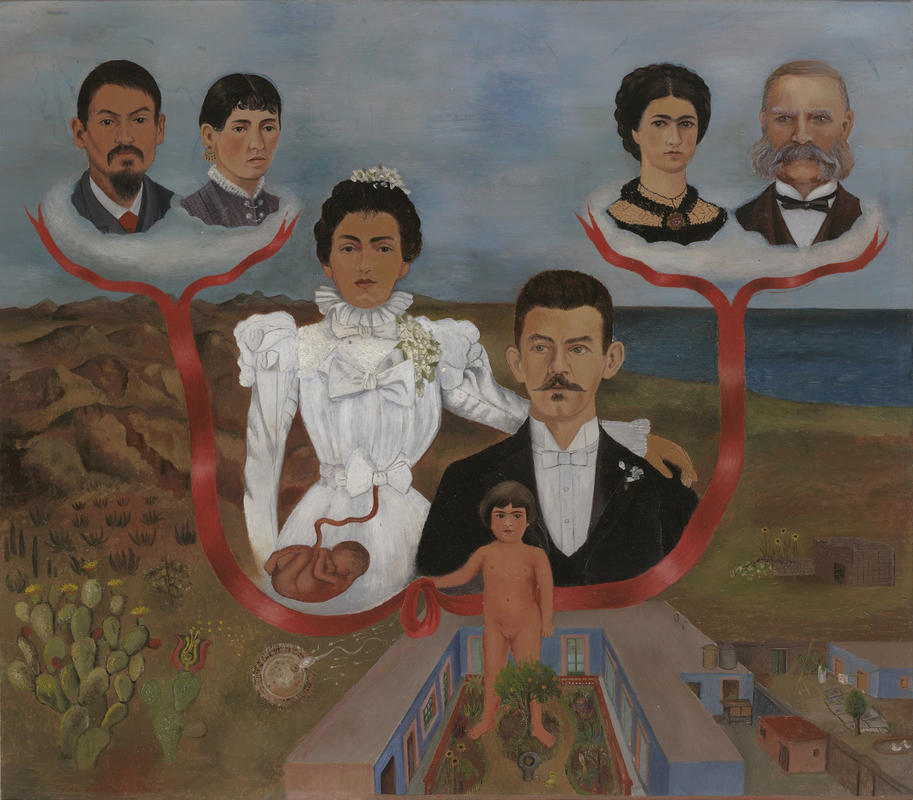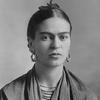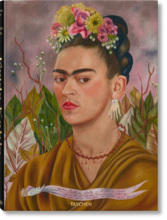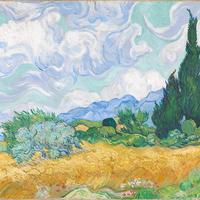More about My Grandparents, My Parents, and I (Family Tree)
- All
- Info
- Shop

Contributor
This is one of two family portraits that Frida Kahlo ever did.
In response to the Nuremburg Laws that forbade interracial marriage in Germany, Kahlo represented her Mexican maternal grandparents and her Jewish-German paternal grandparents with the same genealogical charts that the Nazis used in their campaign for the white supremacy. Kahlo of course shoves that back in the Nazis’ faces by highlighting, rather than hiding her mixed race.
Like most of her work, Kahlo depicts herself in this painting. She is both the little girl and the fetus attached to her mother, which is a little creepy. There are also some not-so-subtle representations of sexuality taking the form of a sperm and egg and a pollinated flower in the corner under her mother. Little girl Frida holds the ribbon that connects her entire family, while she stands in Casa Azul, the house in which she was born and died.
It’s clear from the portrait that Frida identified more with her father than with her mother. She is intentionally standing more in front of him under the depiction of her parents at their wedding. Like Frida, he suffered an accident in his youth that affected him for the rest of his life and had artistic aspirations. He claimed her as “the smartest of his daughters” and obviously his favorite. We can assume that she must also identify more with her paternal grandparents because of their similarly iconic facial hair. Just look at her grandmother’sunibrown and her grandfather’s truly excellent mutton chops. Frida was gifted in more ways than one.
This painting was shown at Frida’s first solo exhibition in November 1938 at the Julien Levy Gallery in New York City. And of course it was bought by a psychiatrist, Dr. Allan Roos, who probably spent the rest of his life trying to diagnose her.














Stunning piece.